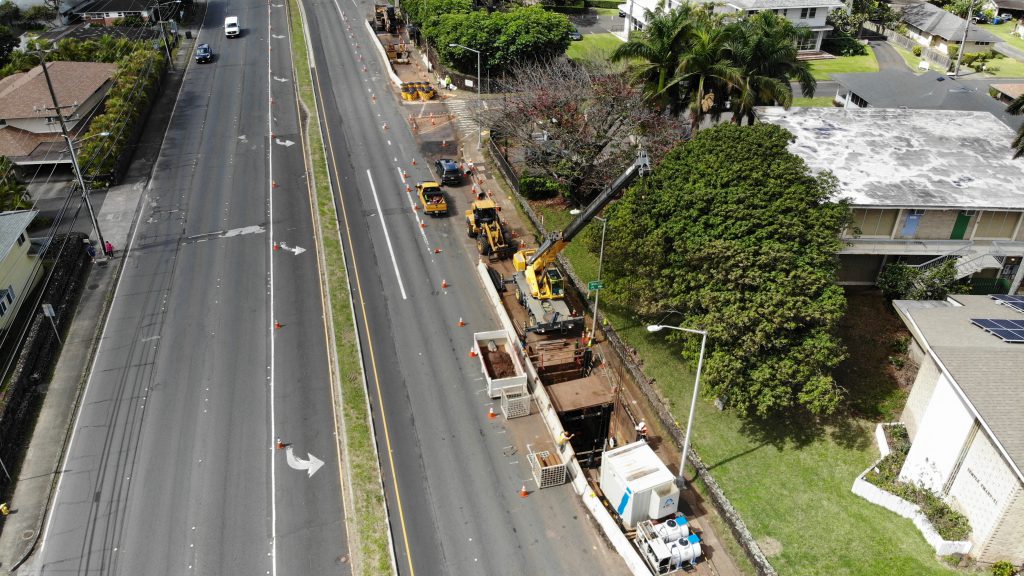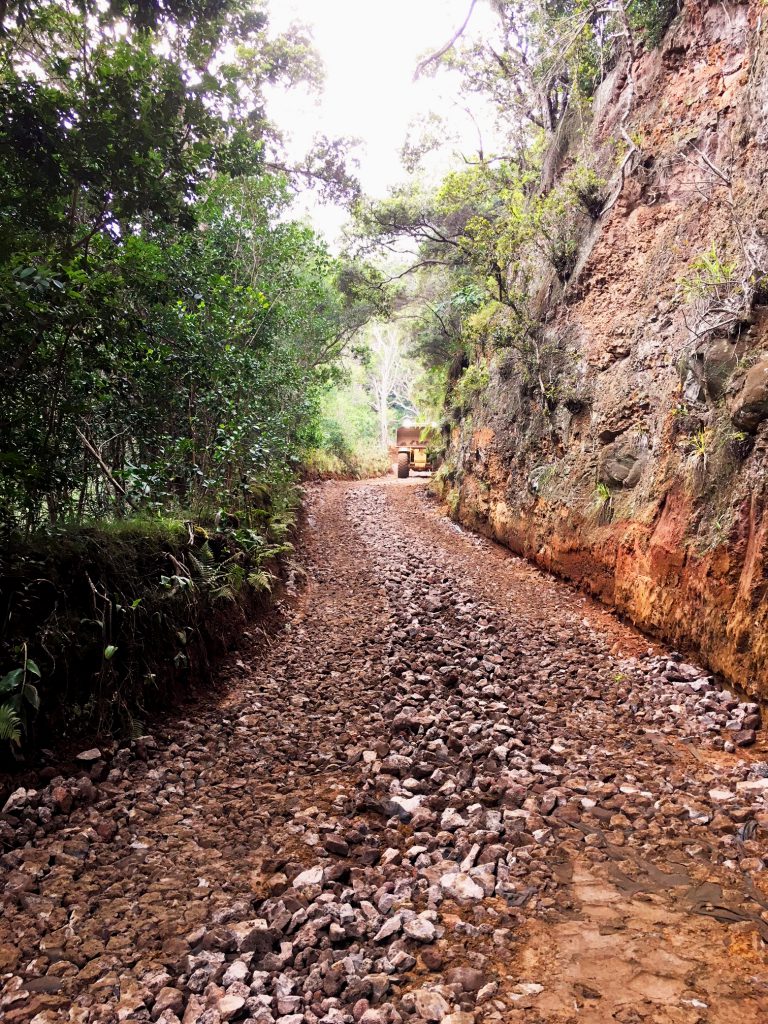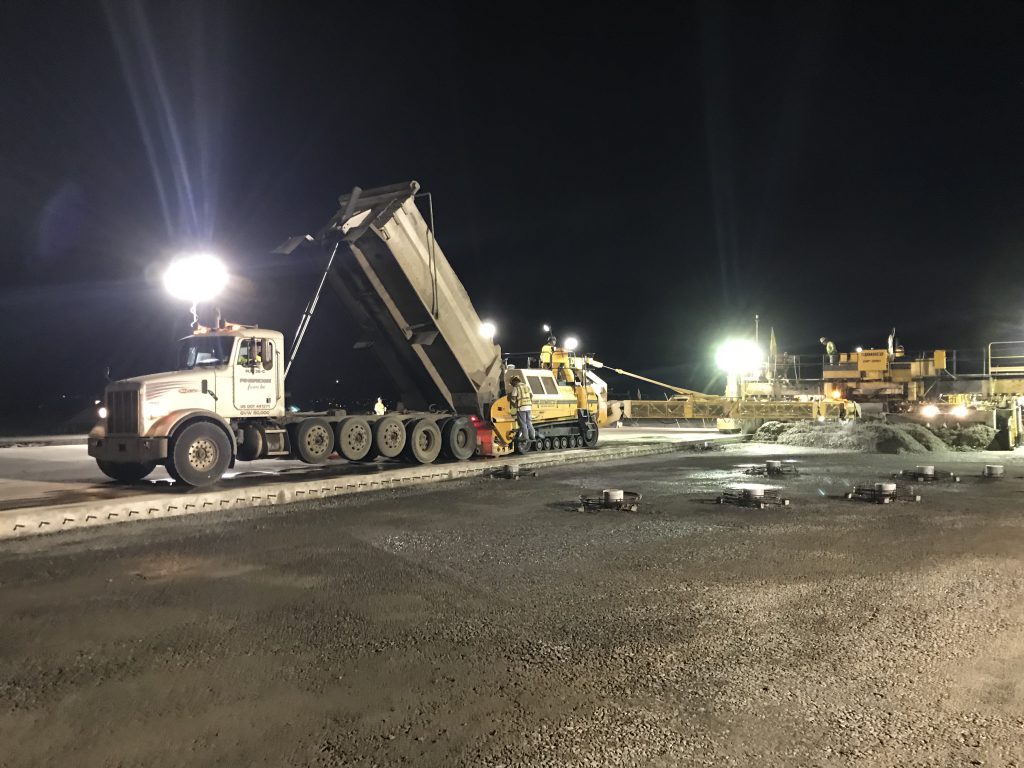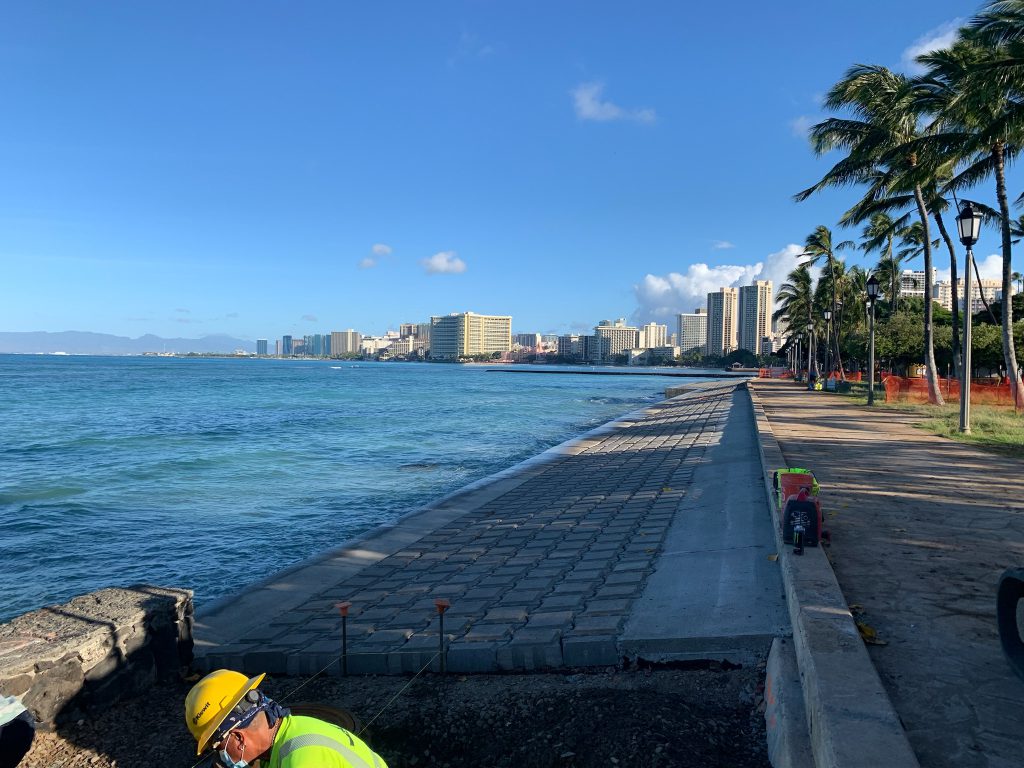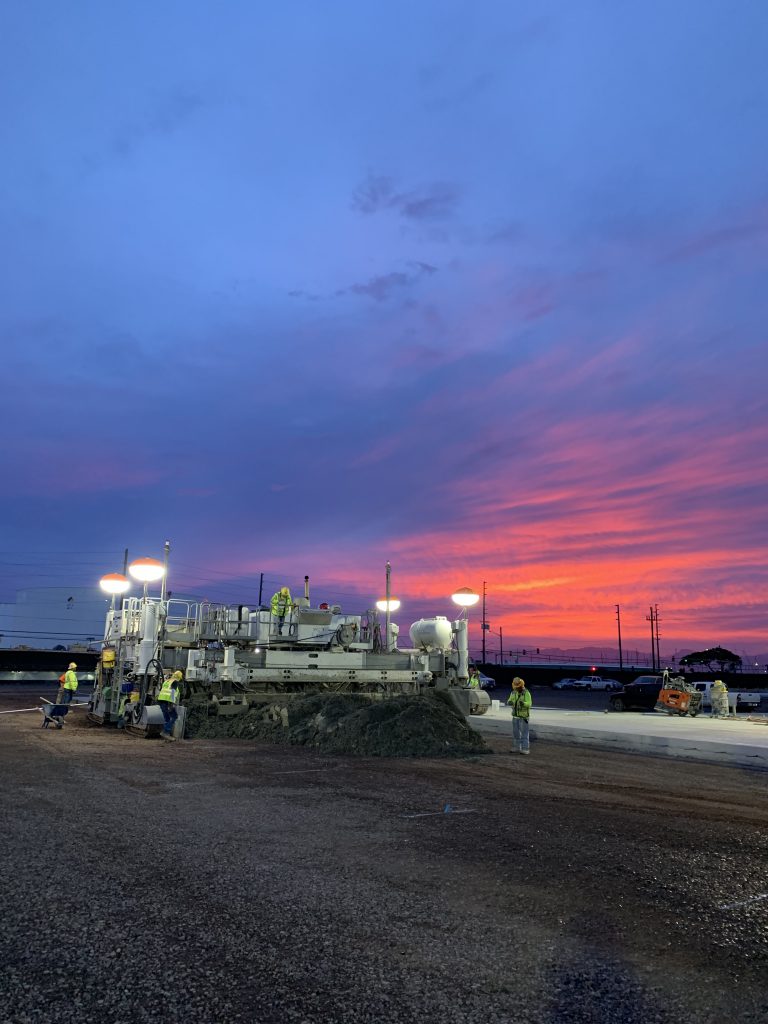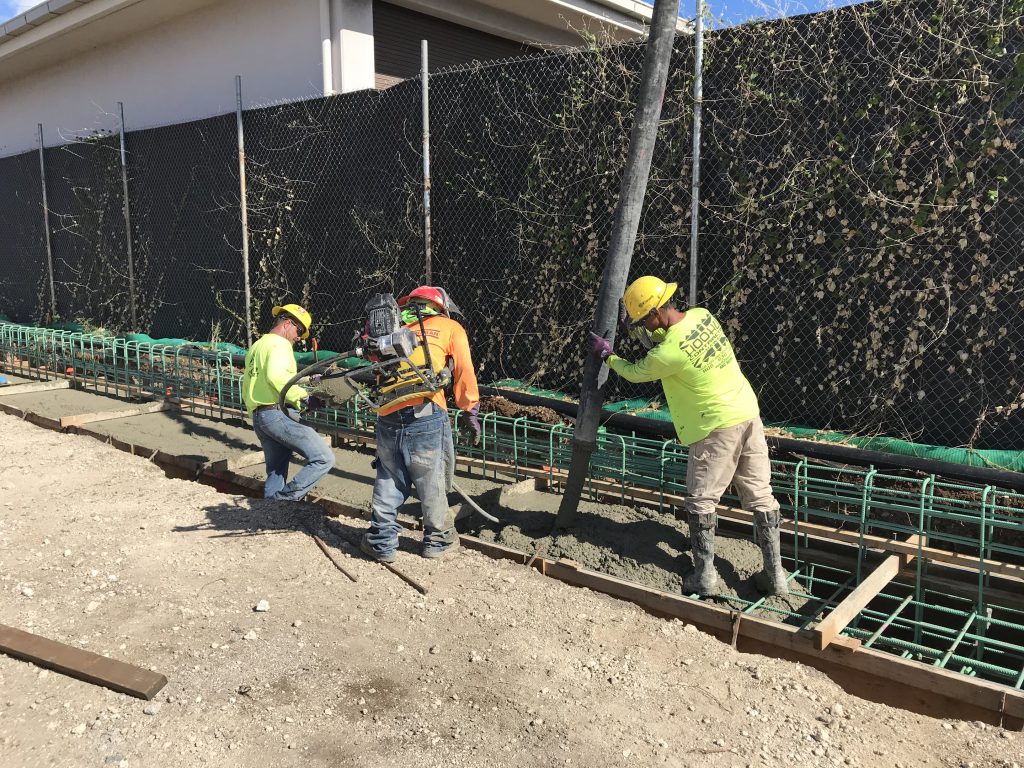A strong strategy and winning formula have led to success for Kiewit Infrastructure West Co. in Hawaii. It’s a combination of bidding enough work, maintaining good relationships, keeping equipment utilized and having a loyal, diversified and dedicated craft workforce.
Kiewit bids 55 to 60 jobs a year in Hawaii, and those projects can range from a few hundred thousand dollars to hundreds of millions. The bulk of the work is traditional bid-build and includes concrete paving, heavy civil, highways, underground utilities, site development, rock revetment, groins and beach nourishment.
“We bid every single job that we have the capacity to perform,” said Kyle Preedy, executive area manager. “Between start-up and close-out, we consistently have 20 jobs active at any given time.”
That’s where the winning formula comes into play.
Hawaii has a dedicated estimating team, which gives them the capacity to bid the high number of jobs. It has its own equipment fleet that is sourced out to the various jobs as needed. They have a craft workforce experienced in a variety of disciplines — a team willing to go where they are needed. Finally, they focus on building strong relationships with clients, subcontractors, employees and others.
Experienced craft
“We have a strong craft pool, a lot of talented craft loyal to us and willing to travel with us,” said Kiewit Sponsor Kyle Johnson. “Our crews can build anything. They might be working on a bridge job one day and a utility job the next.”
Project Manager Kyle Nakamura has been with Kiewit for more than 20 years and attributes a lot of the company’s success in the islands to this experienced crew.
“We have a very strong base of experienced people who already understand the Kiewit culture, our core values and how we do work,” he said. “It’s almost like you come into a job and you already have momentum.”
Most stay with Kiewit because of the culture. Nakamura said there is a sense of family and the people out in the field are close and always looking out for each other.
“Craft stay with Kiewit because they come to work for us and they realize that when we say we take safety seriously, we mean it,” Nakamura said. “They understand that the reason we need them to follow the rules is because we want them to go home safe at the end of every day. They see we mean it, and we genuinely care about them.”
Making sure the people and the equipment stay busy is a bit of a juggling act. It takes a lot of coordination, planning and scheduling the work to optimize resources.
Johnson compared Kiewit’s Hawaii operations to running a small contracting business.
“Our targets are different, we do diverse types of work and a lot of the work is short duration — a year to 18 months,” he said. “We’re always going through start-up, construction and closeout.”
The Dowsett Highlands Sewers Project required installation of 17,500 linear feet of new gravity sewer lines, using guided bore and open excavation methods.
Crews recently built a helicopter dock pad, landing platform and a concrete emergency landing pad at the Marine Corps base in Kaneohe, Hawaii.
Strong Relationships
“One thing about Hawaii, whether it’s the clients we work for or the subcontractors we work with, it’s a small place. You know a lot of the people you’re working with,” said Johnson. “They might be with one company one day and another company the next but sure enough, they are going to turn up somewhere in the industry. Those relationships do matter; that sense of community matters out here.”
Most of the Hawaii work is the traditional rip-and-read contract, but relationships are still key. Working with the same people helps the company understand what it takes to work for them, he added.
“We might work for 15 or more clients in a given year, but they are clients we’ve worked with in the past. We have a history with them,” said Preedy.
Repeat clients include the Hawaii Department of Transportation, city and county of Honolulu, Hawaii Department of Land and Natural Resources, U.S. Army Corps of Engineers and the U.S. Naval Facilities Engineering Systems Command.
Training the next generation
Beautiful scenery, beaches and comfortable temperatures aren’t the only benefits of working for Kiewit in Hawaii.
Because of the number of jobs underway at any given time and the varying sizes of those jobs, employees in Hawaii get exposed to a lot of different types of work and get opportunities to rapidly develop their careers.
“I’m certainly proud of the success we have here financially and operationally, but I think one of the unique things that we get to do over here is to develop the next generation of contractors for our company,” said Preedy.
“These projects provide folks with good opportunities to take on bigger roles, wear a lot of hats and get exposure to all different aspects of the contracting business,” said Johnson. “It accelerates their development and allows us to continue to put them in bigger roles with more responsibility, so we can keep chasing more work.”
Hawaii has logistical challenges, which also provide valuable training in resource planning. Located 2,700 miles from the mainland, they can’t run down to the local hardware store or equipment dealership to pick up something they need. Preedy said that can be very expensive or require a lengthy lead time to get, so detailed, accurate planning is critical.
While they have a strong pool of talent that stays in Hawaii, most move on to other roles in the company.
“When you look at the history of the folks who have spent time here, the list is pretty long of people who went to the mainland and had a huge positive impact on other parts of the company,” Preedy said. “It’s a reflection of the business model here. It’s a disciplined approach to training and developing the next generation of project engineers, superintendents, project managers and sponsors.”
